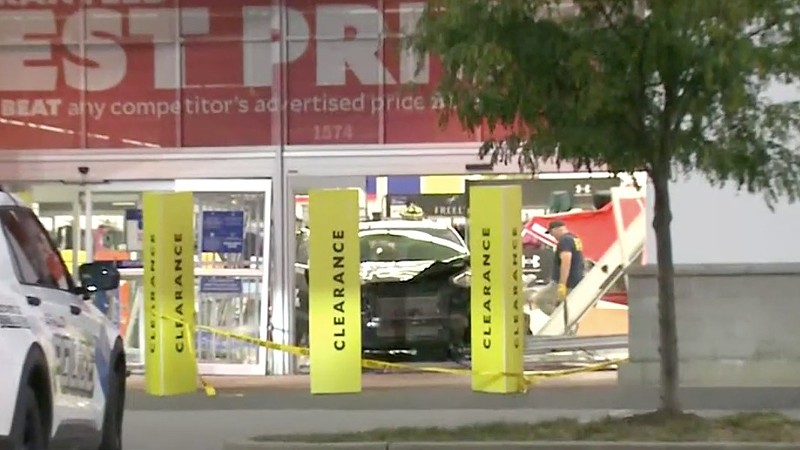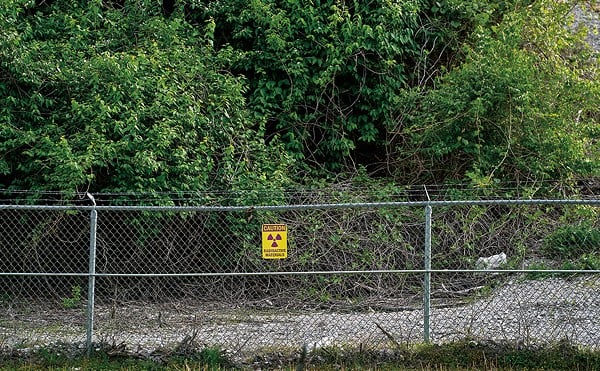
A Kia Optima smashed through the front door of an Academy Sports and Outdoors this morning in in O'Fallon, Illinois.
Far more juveniles than adults have been nabbed for car theft in St. Louis this past summer — meaning that the majority of auto theft-related allegations are adjudicated in a system that is much different, and much less open to the public, than the adult court system.
According to St. Louis Metropolitan Police Sergeant Charles Wall, 39 adults were arrested in the city for crimes related to auto theft in July, August and the first three weeks of September. Over that same period, 107 juveniles were taken into custody for auto theft crimes.
The low numbers of apprehensions go a long way in explaining why prosecutors bring so few charges for auto theft, even as the area has suffered a rash of stolen cars. Earlier this month the RFT found only 19 instances of individuals being charged with crimes related to auto theft during July and August in the city. The numbers for St. Louis County were not much higher, with approximately 46 charges brought for auto theft-related crimes over that same period.
Also explaining the relatively low number of prosecutions is the fact that charges against juveniles are handled much differently. They’re not public, and frequently do not result in the teens being held in custody for any longer than it takes to release them to their parents.
"Generally when juveniles are taken into custody the Juvenile Court is contacted," Wall tells the RFT. "The Juvenile Court advises whether the juvenile will be held or not. If a juvenile is not held by the Juvenile Court then they are released to a parent or guardian."
Amanda Sodomka, the assistant court administrator and chief juvenile officer for the Circuit Court in St. Louis City, says that the decision of whether or not to detain juveniles is made using a standard assessment. The assessment factors in the specific allegation but also numerous other criteria including previous referrals to the juvenile system, if the young person has previously failed to attend a court hearing or if they have escaped from a juvenile detention facility in the past.
"We're focused on rehabilitation and the juvenile system," Sodomka says.
Greg Smith, an attorney who represents numerous juveniles alleged to have committed crimes in the city and county, says that in his experience juveniles accused of robbery — which involves force, such as in a carjacking — are much more likely to be detained in juvenile detention.
"Those kids aren't getting released to their parents," he says.
But juveniles accused of breaking into an unoccupied car and driving off with it are a different story. Smith says they are much more likely to be released to their parents before generally facing some form of court supervision, as well as paying restitution and having to adhere to a curfew, Smith says.
The total number of individuals — adults and juveniles — arrested and taken into custody pales in comparison to the levels of auto theft and attempted auto theft occurring in the region in the past few months.
In July and August, city police recorded 2,023 incident reports related to car theft. However, Wall says, "To be clear this is the number of reported incidents and not necessarily the number of stolen vehicles."
Rick Rosenfeld, a criminologist and professor emeritus at UMSL, says that for those who commit auto theft as well as other property crimes, the risk of arrest is fairly low in each instance of the crime being committed. But, Rosenfeld says, "These tend to be crimes that are committed on a repeated basis. So over time, the risk of course, will go up."
Of those 2,023 incidents, Walls says that 1,450 involve a Hyundai or a Kia.
Rosenfeld says that data suggests that auto thefts are less motivated by a desire to joy ride than in the past, and instances of stolen cars being sold for parts are vanishingly rare. "I'm guessing there are relatively few, if any, chop shops left in the city of St. Louis," he says.
Instead, Rosenfeld says, stolen cars are often used in another crime, then abandoned quickly afterwards — making the thieves much harder to trace than if they’d used a car linked to themselves or a family member.
The relatively high number of juveniles stealing cars, as well as the low number of apprehensions, is playing out at the same time as the viral Kia Boyz trend is leading to a rash of Kias and Hyundais.
St. Louis City Director of Public Safety Dan Isom said on a call with reporters earlier this month that city police "really are trying to employ multiple strategies [to combat auto theft]. The first of which is trying to place our officers in the locations where we know these crimes are occurring."
"Of course, that becomes a little bit challenging with Hyundais and Kias," Isom adds because those thefts are happening "all over the city."
Isom also said that police are surveilling areas where cars are dumped after being stolen.
"Now really the best solution is to put a club on your car if you have a Hyundai or Kia," Isom says.
We welcome tips and feedback. Email the author at [email protected]
or follow on Twitter at @RyanWKrull.






